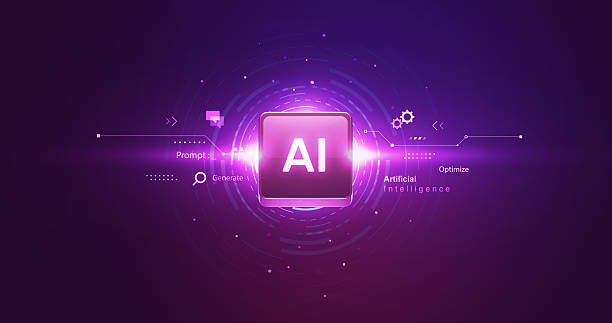Why is a multilingual website necessary?
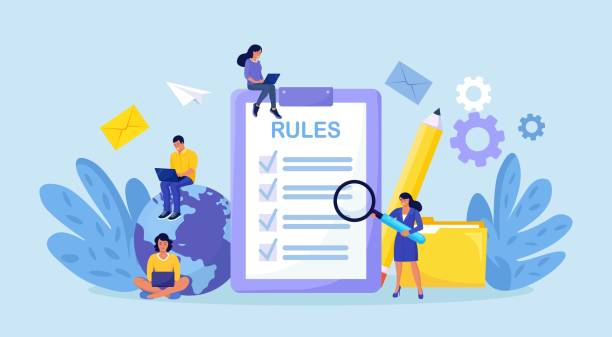
In today’s world where geographical boundaries are blurred by the internet, access to global markets has become more important than ever.
For #businesses, the #global_market is no longer a dream, but an unparalleled opportunity for growth and development.
In this context, having a multilingual website is no longer a luxury option, but a strategic necessity.
Imagine a potential customer in China or Germany visiting your website and encountering content in their native language; this experience will undoubtedly create a greater sense of trust and belonging in them.
Designing a multilingual website allows you to extend your message and services beyond linguistic and cultural borders and reach an #international_audience.
This approach not only increases your website visitors but also significantly boosts your customer conversion rate and ultimately your revenue.
This section is explanatory and educational to provide a proper understanding of the importance of this topic.
Single-language websites miss many opportunities inherent in international markets.
Language is a bridge that connects cultures and businesses, and ignoring it means ignoring a vast portion of market potential.
This is a smart investment for the future of your business that will yield high returns and pave the way for your digital influence expansion.
Are you losing business opportunities due to an outdated website? With Rasawweb, solve the problem of not attracting potential customers through your website forever!
✅ Attract more high-quality leads
✅ Increase brand credibility in the eyes of customers
⚡ Get a free consultation for corporate website design
Competitive Advantages and International Opportunities

Multilingual websites are not just a tool for accessing new markets, but also bring you a significant competitive advantage.
In a world where competition in local markets has reached its peak, entering the international arena can breathe new life into your business.
A professional multilingual website not only demonstrates your respect for global audiences but also presents the image of a reputable and international brand.
This directly impacts customer trust and brand loyalty.
Analytical studies have shown that users are more inclined to purchase from websites whose content is provided in their native language.
This means an increase in Conversion Rate and consequently greater profitability.
With a proper multilingual website design, you can easily introduce your products or services to millions of people worldwide, without the need for physical presence in each country.
This is a way to reduce international marketing costs and optimize your budget.
Furthermore, by targeting keywords in different languages, you find new opportunities to improve your ranking in international search results.
This strategy keeps you one step ahead of competitors who have not yet realized the importance of this topic and opens new doors for your business.
Technical Considerations in Multilingual Website Implementation
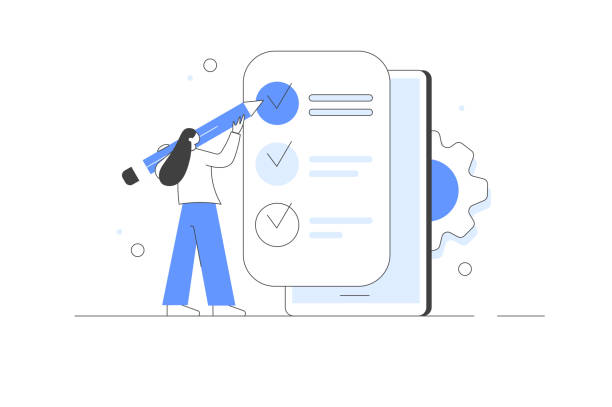
Implementing a multilingual website goes beyond mere content translation and includes very important technical considerations that are crucial for project success.
One of the most important of these considerations is the URL structure.
Should subdomains (e.g., en.yourwebsite.com), subdirectories (e.g., yourwebsite.com/en/), or country-specific top-level domains (e.g., yourwebsite.de) be used? Each option has its own pros and cons in terms of SEO and management.
The most specialized part of this stage is the correct use of Hreflang tags, which help search engines display the appropriate language version of each page to users in different geographical regions.
Incorrect use of these tags can lead to duplicate content issues.
Also, choosing a Content Management System (CMS) with strong multilingual capabilities is of high importance.
Examining options like WordPress with WPML or Polylang plugins, or localized CMSs like Drupal and Joomla is essential.
Server and web hosting should also be optimized for speed and accessibility for global audiences.
These technical aspects form the foundation of a successful and efficient multilingual website design and require high precision and expertise.
Below is a table comparing URL structures:
| Structure Type | Example | Advantages | Disadvantages |
|---|---|---|---|
| Subdirectory | yoursite.com/en/ | Inherits main domain authority; easier management | May be less noticeable for local users |
| Subdomain | en.yoursite.com | Easy hosting separation; in some cases, better for SEO | Requires separate management for each subdomain |
| Country Code Top-Level Domain (ccTLD) | yoursite.de | Very strong for local SEO; high trust perception | High cost; requires separate management for each domain |
Content Management and Effective Translation Processes
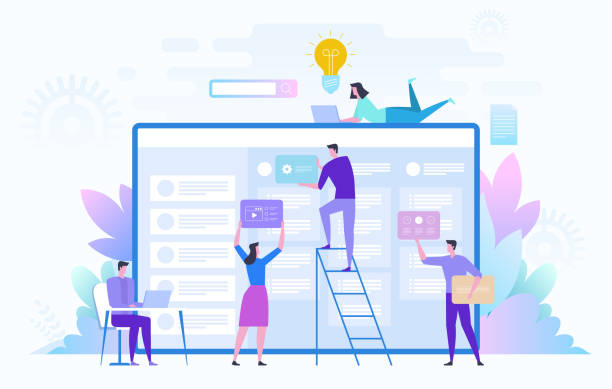
After understanding the technical aspects of multilingual website design, it’s time for its core: content management and translation processes.
Simply translating words is not enough; content must be localized, meaning it should align with the culture, idioms, and even common humor of each geographical region.
This process guides how to produce rich and relevant content for different audiences.
Choosing between human translation and machine translation (with human editing) is an important decision.
While machine translation is faster and cheaper, human translation conveys quality, accuracy, and cultural nuances much better.
For sensitive or specialized content, it is always recommended to use native translators who are experts in your field.
Creating a Translation Memory (TM) and Glossary can help maintain the consistency and quality of translations over time and reduce costs.
Also, review and quality control processes are essential to ensure the accuracy and fluency of translations.
Don’t forget that visual content like images and videos may also need localization.
Managing content on a multilingual website requires a clear strategy and appropriate tools to ensure that each language version remains consistently updated and accurate.
This process is continuous and complex, but with proper planning, it will be manageable and highly effective.
Is your company’s website not as professional and trustworthy as it should be? With Rasawweb’s specialized corporate website design services, create an online presence that reflects your credibility and attracts more customers.
✅ Build a powerful and professional brand image for your brand
✅ Convert visitors into real customers
⚡ Get a free consultation now!
Key to Success in International SEO

SEO (Search Engine Optimization) for multilingual website design has its own complexities and specific points that differ significantly from local SEO.
For success in international SEO, the first step is keyword research in each target language.
Keywords that are effective in one language may not be applicable or may have a different meaning in another language.
Using local keyword research tools and understanding search intent (Search Intent) in each culture is vital.
Geo-targeting through tools like Google Search Console and the correct use of Hreflang tags, help search engines display the appropriate version of your website to users in different regions.
This section is specialized and analytical and helps you attract more organic traffic from around the world.
Additionally, international link building is also important; try to obtain backlinks from reputable websites in your target countries.
Website loading speed is also crucial for global users, especially in regions with slower internet.
A CDN (Content Delivery Network) can be very helpful in this regard.
Avoid machine translation for your SEO content, as this usually leads to lower quality and ranking issues.
A multilingual website design should be optimized both technically and in terms of content for search engines to achieve maximum visibility in international markets.
Understand International SEO Fundamentals to ensure your efforts yield results.
Seamless User Experience on Multilingual Sites

User Experience (UX) in a multilingual website design is just as important as SEO and accurate translation.
Poor UX can quickly drive users away from your site, even if the content is excellent.
The most important aspect of UX on multilingual sites is the easy and clear language switching capability.
The language selection button or menu should be placed in an accessible and prominent location (e.g., top right or bottom of the page) and use universal symbols like country flags or language codes (e.g., EN, FR, DE).
However, using flags alone can create questionable content, as one language may be spoken in several countries (e.g., Spanish in Spain and Latin America).
The best approach is to display the language name instead of the flag.
Localization goes beyond language; website design should align with the local culture.
Colors, images, layout, and even the display of dates and units should be appropriate for the cultural expectations of users in each region.
For example, some cultures use right-to-left layouts (like Persian and Arabic).
Loading speed and mobile compatibility are also crucial for global UX.
Users expect your website to work well on any device and with any internet speed.
An international website should be continuously reviewed from the perspective of global users to ensure that the user experience is consistent and pleasant for everyone.
Creating an engaging and frictionless user experience encourages users to stay longer on your site and interact more.
Choosing Efficient Tools for Multilingual Website Development
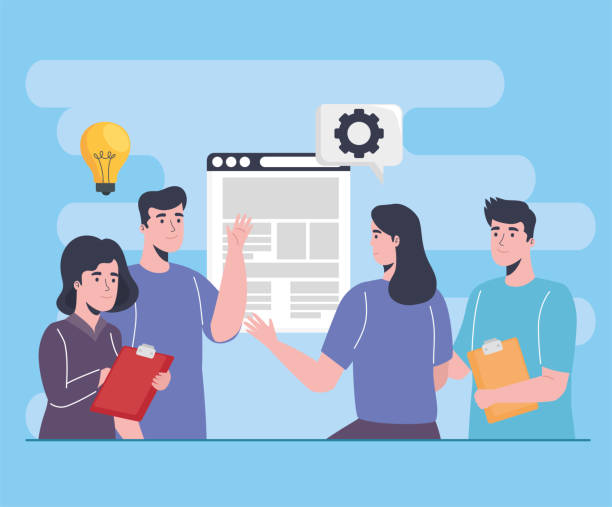
Choosing the right tools and platforms for multilingual website design can make a big difference in ease of management, efficiency, and final cost.
Today, numerous Content Management Systems (CMS) exist that offer multilingual capabilities either natively or through plugins and modules.
WordPress with plugins like WPML or Polylang, is one of the most popular options, providing powerful features for multilingual content management.
Similarly, Joomla and Drupal also have stronger native multilingual capabilities and are suitable for larger and more complex projects.
Additionally, specialized web translation platforms like Weglot or ConveyThis exist that allow you to quickly and easily translate your website into multiple languages, even if your CMS does not have native multilingual capabilities.
These types of tools often work using a combination of machine translation and the possibility of human editing and can be news of the latest advancements in automated translation.
When choosing a tool, pay attention to factors such as ease of use, costs, technical support, SEO capabilities, and compatibility with other tools you may need.
Some tools also provide analysis of traffic and performance for different language versions, which is essential for continuous optimization.
Making the right decision at this stage lays the foundation for a sustainable and successful multilingual website design.
Below is a table of some popular CMSs for multilingual development:
| CMS | Multilingual Capability | Ease of Use | Best for |
|---|---|---|---|
| WordPress | With plugins (WPML, Polylang) | Very high | Blogs, small to medium corporate sites |
| Joomla | Native and strong | Medium | Corporate sites, organizational portals |
| Drupal | Native and advanced | Expert | Large and complex enterprise, government projects |
Overcoming Challenges in Multilingual Website Design and Management

Despite its many benefits, multilingual website design is not without challenges, and readiness to face them is key to success.
One of the biggest questionable content can be managing the budget and costs associated with translation and maintenance.
Quality translation and localization, especially for large volumes of content, can be expensive.
The solution is to prioritize content for translation and use a combination of human translation for key pages and machine translation for less sensitive content.
Translation accuracy and maintaining the original tone and message in different languages, is another challenge that can only be resolved through close collaboration with native translators and subject matter experts.
Educational guidance about linguistic and cultural complexities is essential for the design and content team.
Technical issues such as correct Hreflang tag configuration, URL management, and site speed optimization for different regions can also be complex and require technical expertise.
Continuous content maintenance and updates in all languages is also an operational challenge that requires strong content management processes and appropriate tools.
This article guides on how to overcome these challenges and leverage the full potential of your multilingual portal through meticulous planning, hiring expert teams, and utilizing appropriate technologies.
Early identification of these obstacles and developing effective strategies to address them ensures the long-term success of your website.
Are your e-commerce website visitors leaving before purchasing? Don’t worry anymore! With Rasawweb’s professional e-commerce website design services, solve the problem of not converting visitors into customers forever!
✅ Significantly increase conversion rates and sales
✅ Unparalleled and engaging user experience
⚡ Contact us now for a free consultation!
Lessons from Success in Multilingual Website Design
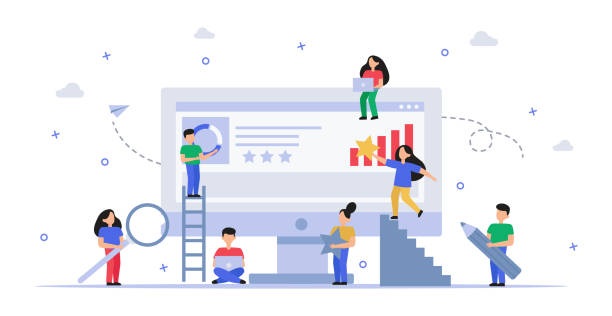
Examining successful examples of multilingual website design can teach us valuable lessons.
Large international companies like Airbnb or Netflix are prominent examples of multilingual websites that not only translate their content but also localize the user experience.
Airbnb allows users to choose their language and currency and provides localized content based on their geographic location.
This approach means analyzing user behavior in different regions and continuously adapting strategies.
One of the key success factors is investing in quality native translators who not only know the language but are also familiar with the local culture and idioms.
This is crucial, especially for marketing content and brand messages.
Another lesson is the importance of strong international SEO; these companies ensure that different language versions of their sites are correctly optimized for search engines to appear in local search results.
Also, a flexible CMS platform that easily supports multiple languages, is essential for managing large volumes of content.
Correct implementation of Hreflang tags and a logical URL structure are vital technical aspects that are well-observed on these sites.
These successful international websites have gained popularity not only due to translation quality, but also due to a comprehensive user experience tailored to different cultures.
These examples provide a practical guide for anyone planning to design a multilingual website and aiming for global success.
Future of Multilingual Websites and Conclusion

The future of multilingual website design is rapidly evolving with technological advancements, especially in the field of Artificial Intelligence (AI) and machine translation.
While machine translation still cannot fully replace the nuances of human translation, it is continuously improving and can serve as a powerful auxiliary tool in the localization process.
Multilingual voice search and the need to optimize content to respond to these types of searches, is a new trend that designers and marketers should pay attention to.
Also, the emergence of new markets and increased internet access in developing regions, further highlights the need for multilingual website design.
This is an explanation to show the future outlook.
In conclusion, building a multilingual website is no longer just a trend, but a fundamental element for any business that dreams of expanding globally.
It not only helps you reach a larger audience but also enhances your brand credibility and provides a sustainable competitive advantage.
From technical aspects like URL structure and Hreflang tags to content management, international SEO, and localized user experience, every aspect of multilingual website design requires careful and strategic attention.
With proper planning, choosing the right tools, and collaborating with specialists, you can create a website that not only transcends linguistic barriers, but also captures the hearts of your global audience.
This investment will pave your way to success in the international arena.
Frequently Asked Questions
| Question | Answer |
|---|---|
| What is a multilingual website? | A website whose content is available to users in more than one language. |
| Why should I make my site multilingual? | To access more audiences in global markets, improve user experience, and enhance international SEO. |
| What are the technical approaches to building a multilingual site? | Using subdirectories, subdomains, or URL parameters to differentiate languages. |
| How does multilingual design affect SEO? | By targeting local keywords and providing content in users’ native language, the site’s ranking in search engines for those regions improves. |
| What are the challenges of multilingual website design? | Managing content translation, supporting Right-to-Left (RTL) direction, technical issues related to language addressing, and maintaining design consistency. |
| How to choose multilingual website languages? | Based on target audience analysis, desired markets, and current site traffic data (if available). |
| What is RTL support and why is it important for some languages? | Right-to-Left, is the direction of text and page elements display from right to left, which is essential for languages like Persian, Arabic, and Hebrew. |
| How to manage multilingual website content? | Using Content Management Systems (CMS) with multilingual capabilities, translation plugins, or professional translation services. |
| What is the user experience (UX) like on a multilingual site? | The ability to easily change languages should be provided, and the translated content must be of high quality so that users feel comfortable. |
| What are common CMS platforms for multilingual sites? | WordPress (with plugins like WPML), Joomla, Drupal, and Shopify (with relevant settings or plugins). |
And other advertising services of Rasaweb Advertising Agency
Smart Advertising Campaign: A fast and efficient solution for analyzing customer behavior with a focus on marketing automation.
Smart Brand Identity: Professional optimization for analyzing customer behavior using SEO-driven content strategy.
Smart Data Analysis: Designed for businesses looking to manage campaigns through Google Ads management.
Smart Customer Journey Map: Designed for businesses looking to manage campaigns through an SEO-driven content strategy.
Smart Social Media: Transform SEO ranking improvement with the help of attractive user interface design.
And over hundreds of other services in the field of internet advertising, advertising consulting, and organizational solutions
Internet Advertising | Advertising Strategy | Advertorial
Sources
- Multilingual Website Design for Global Expansion
- Comprehensive Guide to Building a Multilingual Website
- Key Tips for Multilingual Website Design
- Search Engine Optimization for Multilingual Websites
? Rasaweb Afarin: Your digital partner for growth and visibility in the online world. From dedicated website design to SEO optimization, we provide comprehensive solutions for your business success.
📍 Tehran, Mirdamad Street, next to Bank Markazi, Kazeroon Janubi Alley, Ramin Alley, No. 6




